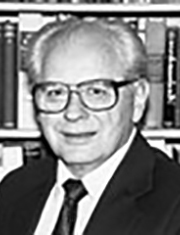Vocal Music
- An Easter Greeting – Martin How (b. 1931)
Instrumental Music
- Christ Lay in Death’s Strong Bands – J. S. Bach (1685-1750)
- Chorale – Michael Larkin (b. 1951)
- Premier Suite: Rondeau – Jean Joseph Mouret (1682-1738)
Congregational Music (all hymns from The Hymnal 1982 with the exception of those marked “R” which are from Renew.)
- Hymn 374 Come, let us join our cheerful songs (NUN DANKET ALL UND BRINGET EHR)
- Hymn 417 This is the feast of victory (FESTIVAL CANTICLE)
- Hymn 255 We sing the glorious conquest (MUNICH)
- Hymn R202 Sing alleluia to the Lord (SING ALLELUIA)
- Hymn 535 Ye servants of God, your Master proclaim (PADERBORN)
- Psalm 30:1,3-6, 12-13– Tone Ib
 |
| Martin How |
The anthem today is evidence of his interest and devotion to writing music for young or beginning singers. While An Easter Greeting may be easy to put together as a choir, it is still quality music which is fun to sing and interesting to listen to.
The opening voluntary is Christ lag in Todesbanden, BWV 625, a selection from the Orgelbüchlein (Little Organ Book) by Johann Sebastian Bach. Orgelbüchlein is a collection of 46 preludes for organ almost exclusively written during the 1708-1717 period, while Bach was court organist in Weimar. The collection is defined by Bach himself as '[a book] in which a beginning organist receives given instruction as to performing a chorale in a multitude of ways while achieving mastery in the study of the pedal, since in the chorales contained herein the pedal is treated entirely obligatory'.
The English translation of the title is "Christ lay in death's bonds." It's an Easter hymn by Martin Luther with a melody is by Luther and Johann Walter. The melody as set by Luther (with help from Walter) seems to have strong correlations with parts of the Easter chant, Victimae paschali laudes. It's in a minor key, but it's joyful 16th-note motif in the accompaniment helps to give this work a sort of dignified elation.
 |
| Michael Larkin |
While you may not recognise the name Jean-Joseph Mouret, you'll surely recognize his music. Mouret was a French composer whose dramatic works made him one of the leading exponents of Baroque music in his country. Even though most of his works are no longer performed, Mouret's name survives today thanks to the popularity of the Rondeau from his first Suite de symphonies, which has been adopted as the signature tune of the PBS program Masterpiece and is a popular musical choice in many modern weddings. It is the closing voluntary this morning.



